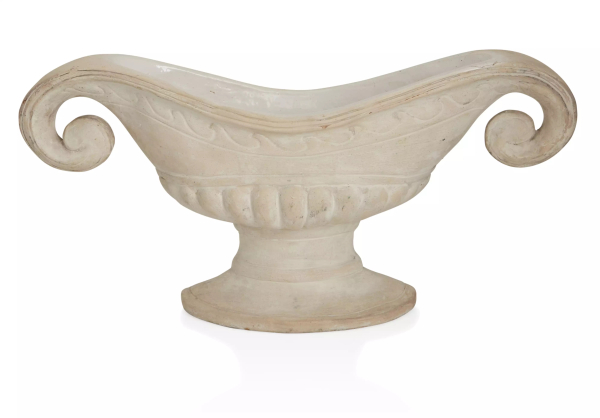Constance Spry (Nee Fletcher) was born in Derby in 1886 into a working-class family. She studied to become a nurse, and at the end of World War II following her escape from a violent marriage in Ireland began teaching cookery, dressmaking, and flower arranging at a Continuation School in Homerton where she became headmistress.
Spry initially arranged flowers for friends, before retiring from teaching and opening her own shop in 1929 simply called ‘Flower Decoration’. She was commissioned to decorate the windows of the Atkinsons Perfumery on Old Bond Street, which were so dramatic and exciting that it is said that police officers had to move crowds along from the front of the shop. Her shop was a great success and grew to have 70 employees and a branch in New York. Clientele included Wallis Simpson, the Prince of Wales, and arrangements for the royal weddings of the Duchy of Gloucester and the Duchy of Windsor. Spry’s crowning floral achievement may be her arrangements for the 1953 coronation of Queen Elizabeth II, in Westminster Abbey.
Spry was fearless in her flower arranging. Her compositions often included non-traditional vegetable components like rhubarb, kale, and artichoke and her designs were asymmetrical and innovatively informal, including flowers sourced by Spry from hedgerows.
These unusual compositions called for unusual vases. Spry had her art assistant Florence Standfast work on developing suitable vases (the first of which were made by hand from papier-mache and varnish) which could be manufactured on a commercial basis. Fulham Pottery is the best-known maker of Spry pottery, and they produced the designs until the mid-1950s. Fulham Pottery used press-moulding to produce the biscuit-fired, Devon earthenware vases. The exteriors were left un-varnished giving them their characteristic plaster-like quality. Spry encouraged her customers to paint their vases to suit their household interiors, advising that “egg-shell blue, a dusty pink and soft lime-green are three colours that meet with general approval and look well” in her 1951 book Summer & Autumn Flowers. These vases were stamped with Constance’s signature and then sold in her shop ‘Flower Decorations’.
Spry pottery vases are typically boat-shaped with a wide bowl, very much the antithesis to the tall and narrow designs popular during the Edwardian period. There were around a dozen different shapes of vases created, most with twin handles and an obvious classical influence. As well as including inspiration from Greek and Roman antiquity, Spry also had some of her favourite flowers incorporated into the designs, namely the Datura. Vase designs for the coronation of Edward VIII were created, and then used at the coronation of George VI and reproduced again in 1953 for the coronation of Elizabeth II.
Constance Spry was a pioneering florist and designer but was also an influential writer, journalist, and chef. She is also now considered a part of LGBTQ+ history and had a relationship with the artist Hannah Gluckstein. In 1932 the pair holidayed together in Tunisia and it was Gluckstein’s sketches of the ancient pots they saw there that inspired the iconic Spry pottery design.
Constance Spry vases have steadily increased in value in recent years, with the rarer, unglazed designs achieving four figures at auction.
